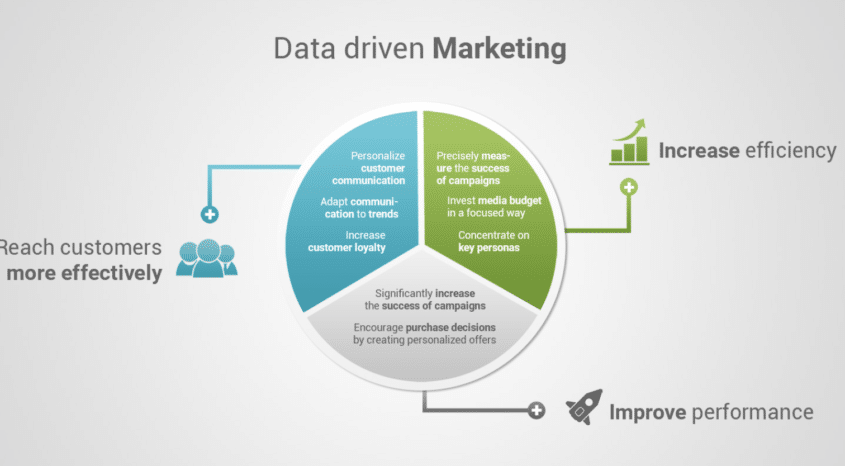Your customers know that they can count on your business for the quality products you provide. They know that they can expect friendly service and a smooth transaction process. However, you may not know much about the customers who depend on you if you don’t have access to reliable and clean data.
When you use data to get to know your customers, you’ll be able to reach out to them as individuals, using their unique histories of interaction with your business to better meet their needs. Especially in the world of ecommerce, personalization is increasingly becoming a necessity.
Personalized outreach is more than a trend; it’s key to forming stronger connections with your customers that will encourage them to support you more frequently in the future.
In this guest blog, Fonteva share advice on how your business can learn more about your customers by using helpful technology to:
- Store and organize customer data to observe patterns and preferences
- Segment your customer data for more effective outreach
- Leverage online sales data
- Get to know your customers in-person
The first step in the process is gathering essential information on each of your customers so that you can use it in future outreach efforts. This process is easiest when you’re able to store and organize the customer data you already have in your CRM.
1. Store and organize customer data to observe patterns and preferences.
It’s more than likely that you’re already using a CRM to record information about your customers after they make their purchases. The number of times they’ve supported you, the products they typically buy, and the channels through which they make their transactions are all important things to know about your customers as individuals.
With comprehensive and organized data and reporting, your business will understand much more about your customers’ needs and preferences.
Looking for the right data to use in developing your customer outreach strategy? The customer information in your existing database is the place to start. If you’re using a leading CRM, you have the advantage of apps and features designed to make your business operations, including customer interactions and data management, much easier.
You’ll definitely want to take advantage of:
- Your cloud-based system. Cloud-based software solutions are a top choice for association management systems, as well as those that businesses and other organizations use whenever they need to store and organize customer or member data. With essentially unlimited storage space, you’ll always be able to add relevant information on new and returning customers. Updates are automatic, and your customers’ information is stored securely on your CRM.
- Reporting features. You’ll be able to track not only the histories of interactions that your business has had with individual customers but also the broader habits and trends that your customers exhibit. This information can influence both your outreach efforts toward customers, as well as your business’s future strategies.
- Additional features and resources. Explore your CRM’s features and additional apps that can help you connect with your customers on social media and automate your communications with them. You’ll learn more about them and they’ll have an opportunity to connect with your business.
Cloud-based software solutions have transformed retail supply chain management, due – in large part – to their ability to help businesses collect and analyze data with ease. Once you’re able to store, view, and interpret the data in your CRM, your business can put it into action by segmenting your customers and creating targeted outreach strategies for each segment.
2. Segment your customer data for more effective outreach.
While your customers share an interest in the products your business provides and, depending upon whether you have physical locations, may share geographic areas, it’s most likely that their similarities end there!
The most effective customer outreach strategy is one that addresses your different customers’ reasons for supporting your business.
Although your business can’t, of course, take a different approach to each individual customer, you can create a personalized experience for them by segmenting your customer data and sending different communications to each segment of customers.
Ready to get started with segmentation?
Consider the following categories as starting points, and then modify or divide them further according to your business’ unique needs:
- Demonstrated loyalty. When you reach out to customers who are regular supporters of your business or have supported you for a long time, thank them for their loyalty. New customers will require a lengthier introduction as to who you are and why your products merit their attention.
- Preferred buying channel. Reach out to your customers where they are. Online shoppers are likely connected to your business via email and social media, so those outreach strategies will work well for them. More traditional customers may prefer direct mail from businesses that are not online-only. If your customers express a communication preference directly, store that information in your CRM.
- Location and other demographic factors. Businesses with multiple physical locations may wish to create multiple communications with customers from different regions in mind. Knowing the ages, family statuses, and approximate wealth of individual customers can also help you to segment your customer database and tailor your outreach.
As your business uses customer data to personalize your outreach, your customers will support your business more frequently, allowing you to gather additional information and ensure that future outreach is only more successful than the last.
Your business can take its cues from the data-centric approach that associations use to improve experiences for their members. Our guide to association management software offers several tips on using your CRM so that your business can easily adapt to your customers and your outreach strategy.
Communication is central to a positive customer experience, and your customers want your business to acknowledge their individual habits, needs, and preferences when they provide you with recurring support. As their habits increasingly shift toward online shopping, ensure that you’re gathering useful data from these sales to improve future communications.
3. Leverage online sales data.
It’s difficult to challenge the notion that the Internet has made shopping for almost anything a lot more convenient. Online sales also make it easy for your business to collect valuable data on your customers, from the items they purchase to the times at which they do so.
Ensure that your business is gathering online sales data and taking it into account in your customer outreach strategies.
When it comes to online sales, your ideal strategy is one that considers broader trends in customer behavior, as well as the more specific preferences of individuals and groups of customers.
Important information that your business can gather from online shoppers include:
- Their buying histories. Knowing what your customers buy from your webstore, how much they buy, and how often they buy and visit are all essential points of information as you work to maintain these customers’ support. You can use categories such as these to segment your customer database.
- Their paths to your online store. Customers who arrived via social media are likely to be more responsive to your business’s future social media posts than those who arrived through other channels. Knowing how your customers got to your online store can help you reach them even more effectively upon their return visits.
- Their other interactions with your business. Long-time supporters of your business who have recently switched to making some of their purchases online will probably respond better to different communications than supporters who found your business online and effectively equate your business with your online store.
To effectively make the most of large amounts of online sales data, borrow the strategies of the best association management software and create comprehensive profiles for each of your online customers by storing all relevant data in your CRM. When you understand different groups of customers better, you can modify the online shopping experience to suit their preferences and encourage return visits.
Ecommerce is only going to expand in the future, so your business is sure to benefit from a strong outreach strategy built on your customers’ preferences. While online sales make it easy for you to collect data, you can strengthen your relationships with individual customers and learn even more about them when you interact with them in-person as well.
4. Get to know your customers in-person.
You’ll get to know your customers better and they’ll grow to trust your business more when you interact with them face-to-face. If you have physical locations, your employees interact with your customers on a daily basis. If you’re online-only, it’s unlikely that your customers can put a “face” to your business.
Foster customers’ long-term support for your business by meeting them in-person.
For businesses with physical locations, ask customers to share their reasons for coming in and supporting you. If you want to alert them to opportunities such as your email mailing list, your social media presence, or your online store, share this information with them. You may even be able to provide customers with rewards for engaging with your business online in these ways.
Want to take your in-person customer engagement to the next level? Whether you have physical locations or you’re online-only, consider hosting an event. Depending upon the resources available to you, you can invite top customers, all customers, or any interested members of the community in which you’ll be holding the event.
At the event, offer plenty of information about your products, as well as your locations and buying options, in addition to fun activities for the guests. You can offer products for sale at the event, from your regular items to branded merchandise like t-shirts that reward attendees for their loyalty and help spread the word about your business.
To gather information on your guests so that you can thank them for attending and provide them with information on your business that is tailored to their specific interests, ensure that you’re recording all of the information you gather in your CRM system.
When you understand your customers better, you’ll be able to personalize your communications and optimize your business as a result. Once they know that you’re committed to meeting their individual needs, they’re sure to support your business repeatedly.
With the help of the data in your CRM and a few strategies for putting it to good use, your business can reach out to different groups of customers and address their individual interests in your business. When you create personal connections with your customers, they’ll feel valued and support your business in the future.









